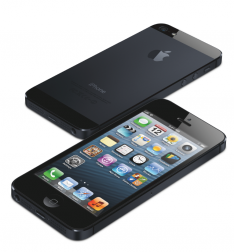What the new iPhone means to marketers
More video on the move and the launch of Passbook are the two most significant things marketers need to consider when the iPhone 5 launches next week, argues Cathie McGinn.
The iPhone 5 launched today, with the usual blend of zealotry and vitriol that has come to typify Apple product releases.
 It’s hard to say whether this is indicative of a different approach after the death of notoriously controlling CEO Steve Jobs, but it’s interesting to note that unlike most previous Apple product launches, there was little in today’s announcement that wasn’t already rumoured across tech blogs and media.
It’s hard to say whether this is indicative of a different approach after the death of notoriously controlling CEO Steve Jobs, but it’s interesting to note that unlike most previous Apple product launches, there was little in today’s announcement that wasn’t already rumoured across tech blogs and media.
Billed as “ the thinnest smartphone in the world” the key features of the Phone 5 are a new, larger screen, higher quality camera (with eight megapixels), faster connectivity and a longer battery life. The new data protocols of HSPA+ and DC-HSDPA are supported, as they are on the new iPad – along with ultrafast LTE (4G).


shame no NFC… lets see what Passport does…
Great summary. Definitely a lack of significant “wow” feature, like the retina screen or Siri launched in previous versions. But it will certainly bring it more in to line with other handsets on the market. If you are interested in how it compares with other top end handset on the market, this is a good article: http://mashable.com/2012/09/12/iphone-5-compared/
Lots of opportunities for companies, brands and products to take advantage of the new features of iOS6, looking forward to seeing what the mobile software developers come up with to take advantage of this handset and Os upgrade.
Nice wrap up! I would maybe argue that the NFC issue is a little more complex than outlined here however. Passbook if anything suggests future NFC integration dmfir the iPhone rather than an “instead of” scenario, passbook as it stands is not really built as a pos interactive system, and to retrofit global infrastructure to support a gps payment system seems counter intuitive to the current landscape in which companies like Coles, woolworths, mcdonalds etc already have implemented NFC payment systems. Apples exclusion of the tech most likely signifies that they will be launching their own proprietary payment system an that this is simply not ready yet. The issue surrounding that release involvse local carrier agreements as well as the credit card companies as the fight to put the secure NFC element on the sim rather than the device continues. Carrier networks have the fear of loosing the 24 month lock down on consumers via device contracts to payment institutions (if your phone is your credit card, perhaps your new iPhone will come in the post from MasterCard rather than Telstra in the future) and that is potentially what is holding apple back, as oppse to other device manufacturers who create the hardware an leave the software to google.
Like peak oil, we have reached peak Apple.
The information about PassBook is not quite right.
PassBook does not automatically allow a user to receive vouchers/coupons etc as they walk through a shopping centre for example.
You must already have installed an app which has built in integration with PassBook.
ShopperNova for example will talk to PassBook to allow users to save offers and vouchers ‘Passes’ into their PassBook. If the user then enters the vicinity of one of these stores, these passes will then appear on the lock screen of your iPhone.
In the same way, Virgin et all will allow you to save your boarding pass in PassBook and they will appear on your screen in the vicinity of the airport.
All the features of Passbook handle cards, vouchers, tickets etc. all work with barcode readers NOT NFC. What’s more Apple have released an API for Passbook, I think what Apple are doing with their NFC strategy is very smart.
Retailers are a long way of having compatible NFC readers on the counter, and there are serious questions centering around who controls the customer via the NFC technology that’s embedded in the device.
Actually most large Australian retailers already have the technology in place and operational, I have a google wallet install running on my android and have used it to pay at: woolworths, Coles, 711, McDonald’s, hungry jacks, Kmart, taxis an many more. Barcode technology is easily integrated with an NFC antenna once installed in the device
purely to add some colour. CBA announcing in July their new eftpos terminals… this could of been an opportunity for Apple to work with retailers (and CBA?) http://www.smh.com.au/business.....228hi.html
Sorry but Apple’s Passbook is nothing more than a glorified folder on a mobile phone.
Compare passbook to the mobile wallet in Windows Phone 8 and Google’s wallet.
Apple’s Passbook is not even remotely like a mobile wallet and without NFC it’s dead on arrival.
Once again it’s amazing what Apple can convince people of……
When I spoke to an Apple product priest a couple of months ago about NFC, they were incredibly evasive. This usually means they have it just up their sleeve.
Remember kids – with iPhone, the numerical iterations are for looks, the S iterations are for capability. My prediction is that NFC will be the wow with iPhone 5S.